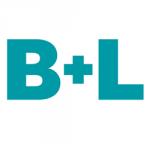 Successful Canadian drugmaker Valeant Pharmaceuticals (VRX) has made an aggressive push into the eye care market with a deal to acquire Bausch & Lomb, a private holding company, for $8.7 billion in cash and loans. The takeover will clear the eye care company’s $4.2 billion debt, after its parent company tried and failed to offload it for $10 billion.
Successful Canadian drugmaker Valeant Pharmaceuticals (VRX) has made an aggressive push into the eye care market with a deal to acquire Bausch & Lomb, a private holding company, for $8.7 billion in cash and loans. The takeover will clear the eye care company’s $4.2 billion debt, after its parent company tried and failed to offload it for $10 billion.
The acquisition is just one in a chain of aggressive buyouts by the Canadian firm, which has spent billions buying 15 companies since 2010. The company also has made many smaller purchases over the past few years, as the company seeks to expand its balance sheets and its market presence by taking over a number of consumer-end pharmaceutical firms.
The news excited investors, causing the stock to soar over 13% by the end of trading on Friday, with a year-over-year appreciation of 76%.
M&As as a Value Investor
VRX is the type of company that value investors love, even if they don’t fully understand pharmaceuticals. The company follows the value investing principle of buying undervalued companies at a discount, and holding that investment for as long as it remains profitable to do so.
Valeant also shows that you need to ignore losses sometimes when buying for growth, even if you aren’t buying into a fast-growth industry. The company’s net margin has remained negative for the past few quarters, in part because of its aggressive layouts in the form of buyouts and acquisitions.
But the Bausch & Lomb purchase is even better, because the purchase is expected to increase the company’s EPS immediately, and will improve margins going forward, after the company enacts restructuring that will yield $800 million in cost savings. Valeant will also streamline its current eye care operations with Bausch & Lomb, with expectations of forward annual revenue above $3.5 billion.
It’s great news for investors but bad news for workers, since those cuts will probably result in layoffs. The actual number of jobs to be cut has not been announced.
Although Valeant’s earnings are negative, it is doing exactly what a value investor should do: making countercyclical purchases in the expectations of a reversal. Since 2010, companies of all types and sizes have been available at fire sale prices. While fear kept more buyers out of the marketplace, causing B&L to fail to attract a buyer at a $10 billion price tag, now value investors are buying at the bottom, and at a discount. This encapsulates perfectly Warren Buffett’s doctrine to be greedy when others are fearful.
